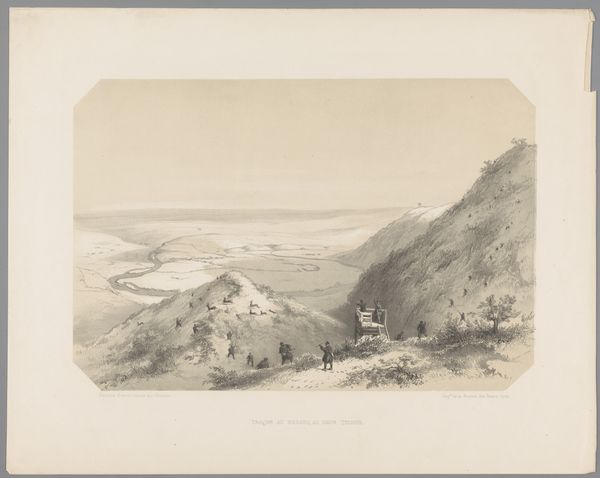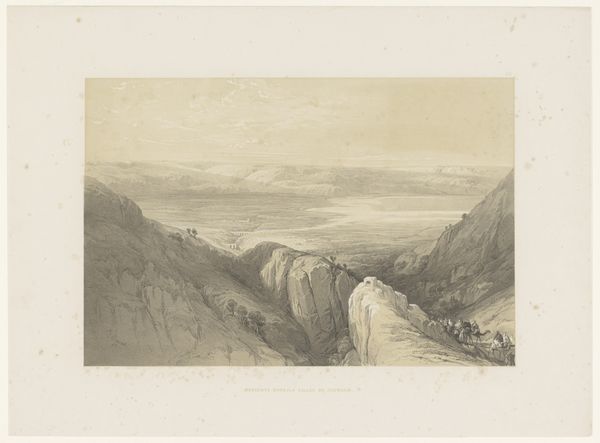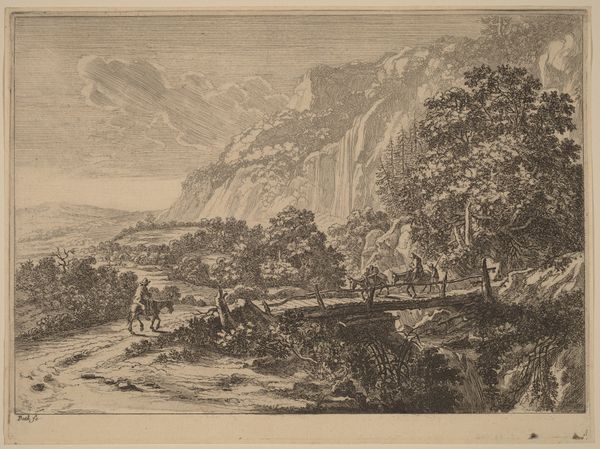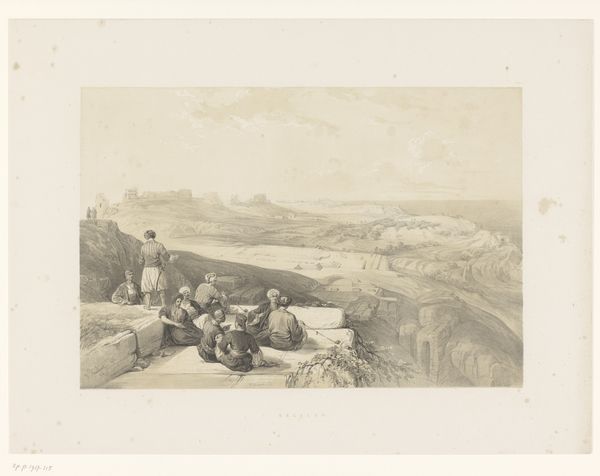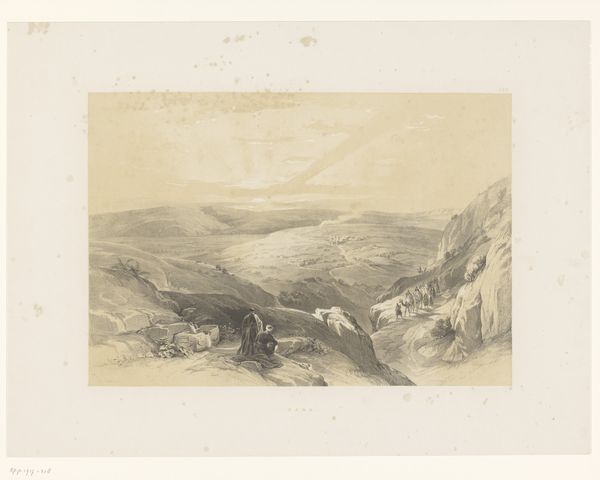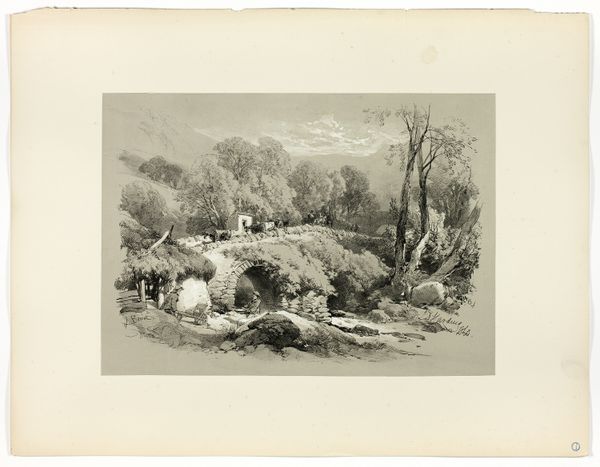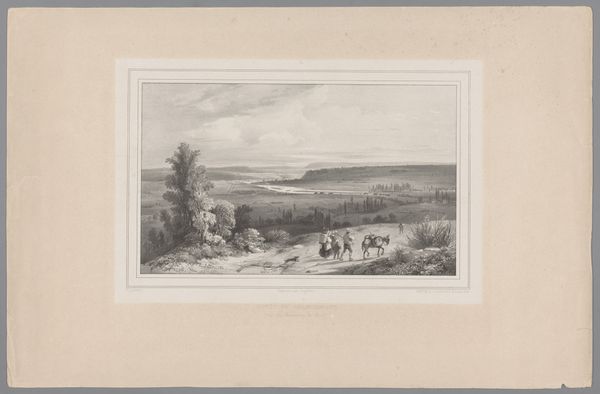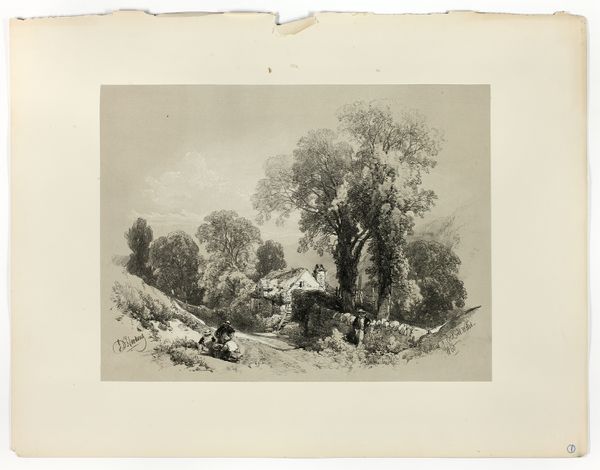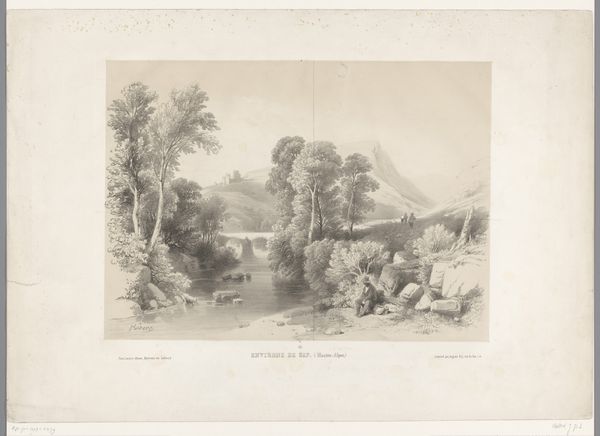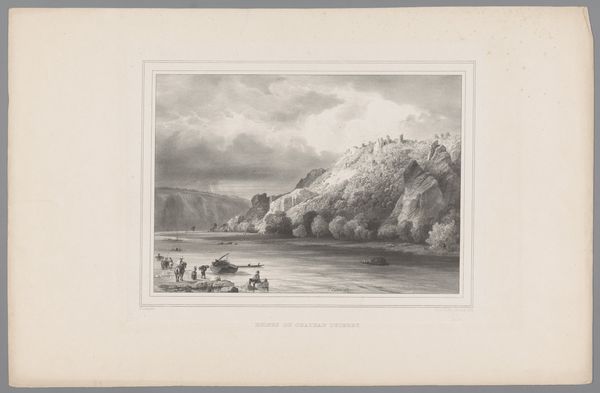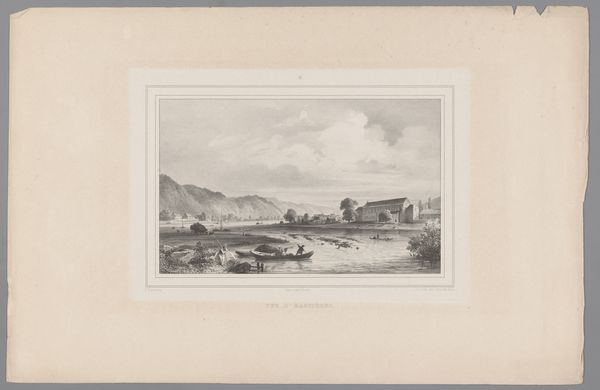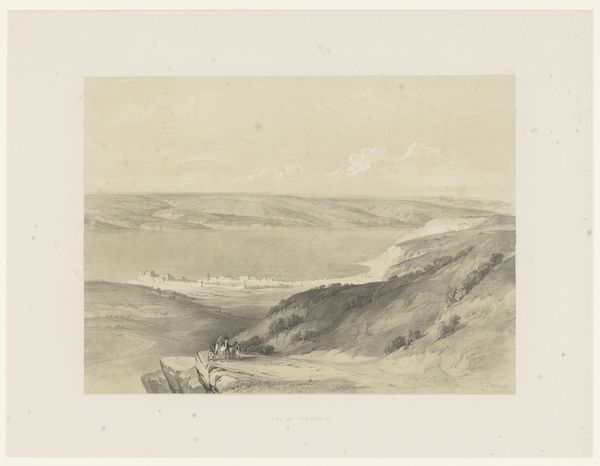
drawing, lithograph, print, paper, ink
#
drawing
#
ink painting
#
lithograph
# print
#
landscape
#
paper
#
ink
#
romanticism
#
orientalism
#
watercolour illustration
Dimensions: 243 × 387 mm (stone); 368 × 538 mm (sheet)
Copyright: Public Domain
Curator: Here we have Edward Lear’s "Collepardo," created in 1841. It’s a lithograph, employing ink on paper, currently residing here at The Art Institute of Chicago. Editor: Oh, my, what a view! It has a hauntingly serene feeling, like the edge of the world. The figures in the foreground seem so small against that grand panorama. I'm immediately drawn to that precipice. Do you think anyone has ever tumbled over it? Curator: The interplay of light and shadow is particularly compelling. Note how Lear uses subtle gradations in ink to delineate form and space, establishing a clear hierarchy of visual elements, thereby guiding the eye to the distant, illuminated city. Editor: Absolutely. It feels like he's both documenting and romanticizing. It’s almost…theatrical, like a backdrop for a historical drama. Though the sepia tones contribute to an overwhelming melancholy for me; all this dust! I suppose this effect may be unintentional, however, merely due to the nature of Lear's choice of inks? Curator: Not at all! We can consider the conventions of Orientalism here. These visual cues provided an aura of authenticity to his European audience. Indeed, Lear subtly crafted this sense of exoticism by meticulously rendering topographical details whilst, simultaneously, imbuing the work with emotive qualities. It's quite cunning, wouldn't you agree? Editor: In a manipulative way, perhaps. Even though, if one disregards that problematic aspect, the composition draws me in! A feeling of timelessness permeates every canyon crevice and crumbling stone. Curator: Precisely. He achieves that timelessness, that pervasive historical feeling, through calculated tonal variation. This visual technique invites meditation on time, history, and landscape as immutable constructs. It is also significant that Lear would employ these formal techniques toward drawings for his *Illustrated Excursions in Italy*—he's essentially performing landscape-as-performance in this series! Editor: Yes! All this dust really has me thinking: the drawing seems so fixed, and permanent, yet Lear implies everything—the figures, the cliff, the sun and the clouds—is slipping further away from our fingers with each passing day. So somber...and so clever. Curator: A stimulating thought indeed, about the fleeting nature of our very human moment. Thank you. Editor: My pleasure.
Comments
No comments
Be the first to comment and join the conversation on the ultimate creative platform.
